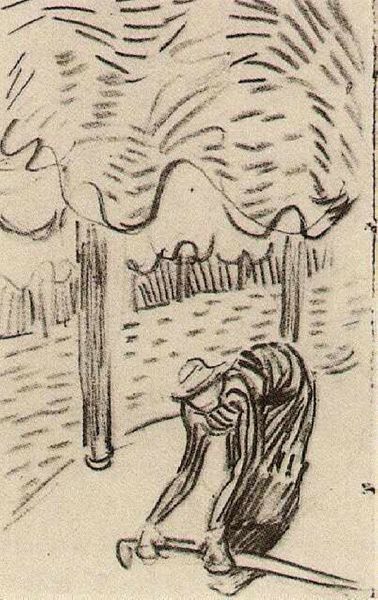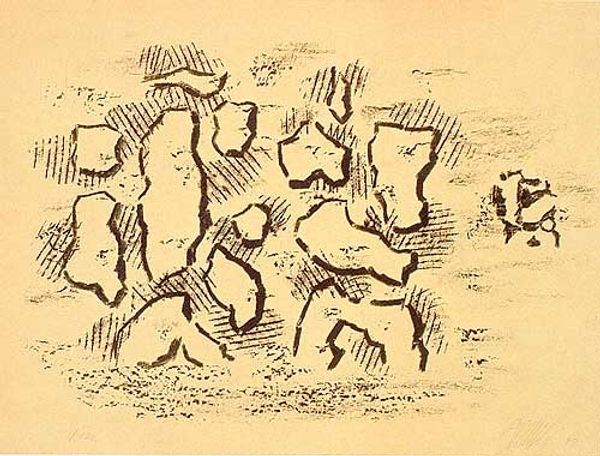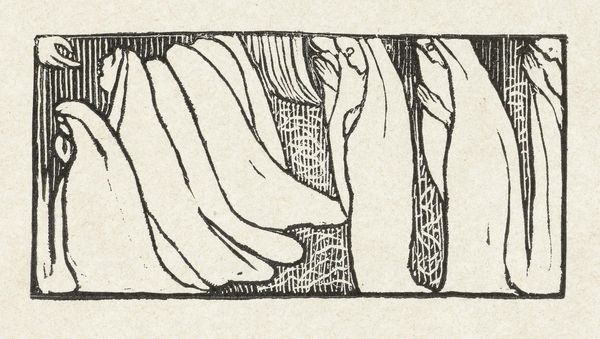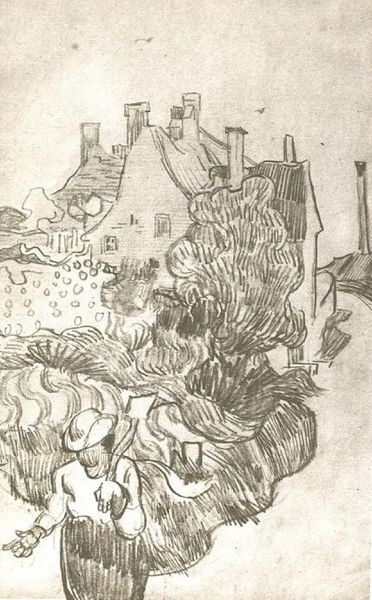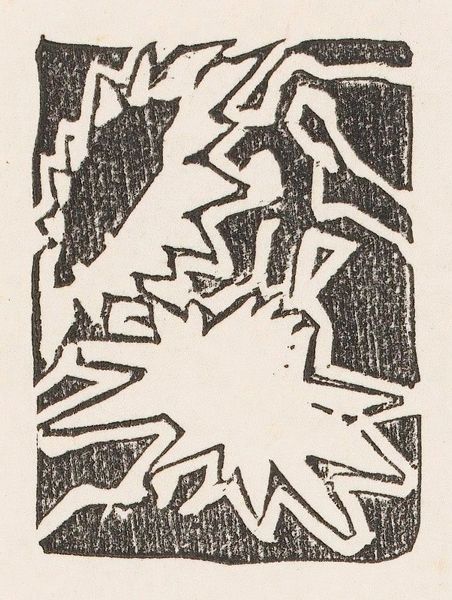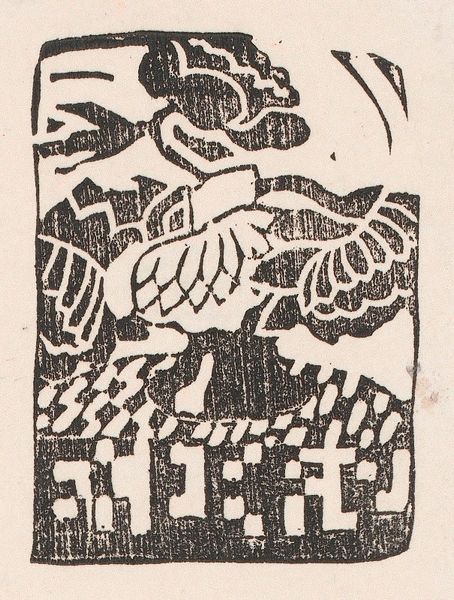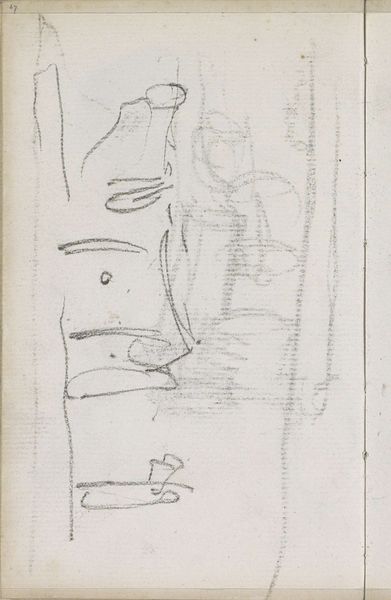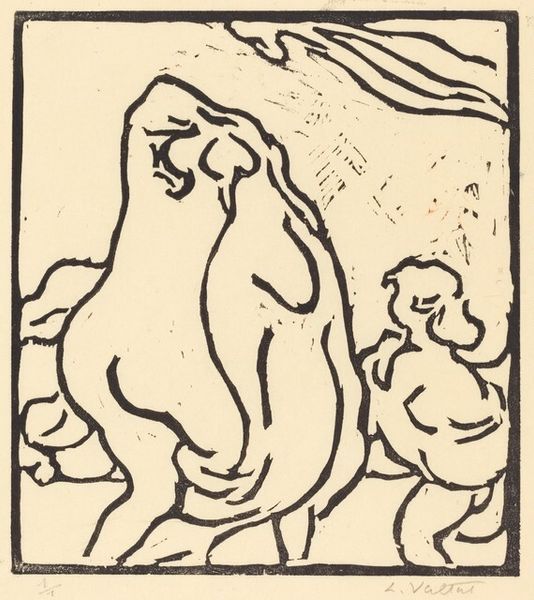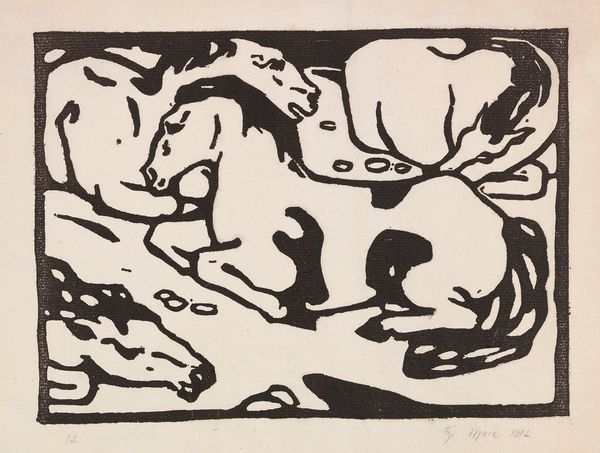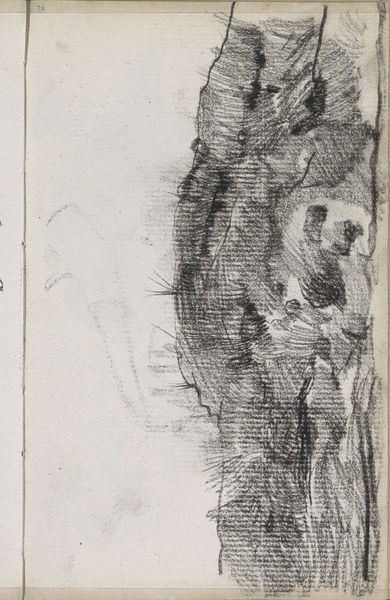
print, woodcut
#
narrative-art
# print
#
landscape
#
figuration
#
woodcut
#
symbolism
#
monochrome
Dimensions: image: 4 5/16 x 15 5/8 in. (10.9 x 39.7 cm) sheet: 11 13/16 x 18 1/4 in. (30 x 46.4 cm)
Copyright: National Gallery of Art: CC0 1.0
Curator: This monochrome print, titled "Souvenir a Bretagne" by Emile Bernard, offers a fascinating look at rural life and memory. The figures and landscapes rendered with bold, almost harsh woodcut lines really stand out. What's your first impression? Editor: Austere, I'd say. And…purposeful? The sharp contrasts certainly draw my eye, but it feels very simplified. Like he’s stripping everything down to bare essentials in both the subject and the method of representing it. Curator: Absolutely, this reductive style reflects Bernard’s involvement with the Symbolist movement. Look at how he uses those heavy lines not just to describe the forms but to convey the weight of the figures. Do you see the woman carrying what looks like a heavy load? It’s more than just luggage. Editor: It really strikes me how Bernard chose the woodcut medium. It gives a sense of what life must have been for those Breton peasants he depicted, with all its rugged simplicity and hard work. And, thinking about this being a “souvenir," there's that romanticized view of rural life often promoted in cities at that time. Curator: Good point. The Symbolists often sought truth in simplicity, so it fits in with that romanticization of peasantry. Also, this flattening of form—it’s not just about showing Breton life as it *is,* but representing an *idea* of Breton life. You notice the composition uses blocks or vignettes almost; a segmented memory. Editor: I see that. This work feels deeply rooted in a specific moment in art history when artists sought meaning beyond mere representation, responding to rapid industrial change in their search. What symbols, besides just “Breton peasants", can we decode? Curator: That's it—a kind of anti-industrial, spiritual counterpoint. I would look to that woman holding a sheep or lamb—an archetypal symbol of sacrifice and simplicity; and the ever-present ducks of a very stable local food chain. These carry deeper allegorical meaning that echoes through centuries of agrarian life in the west. Editor: So, looking at it through those lenses, "Souvenir a Bretagne" becomes more than just a memory. It becomes a statement about tradition, resilience, even spirituality, that resonates even today. Curator: Precisely. A snapshot and a symbol, rendered in the artist's unmistakable and raw vision, which begs reflection about a bygone era through both symbol and artifact.
Comments
No comments
Be the first to comment and join the conversation on the ultimate creative platform.
